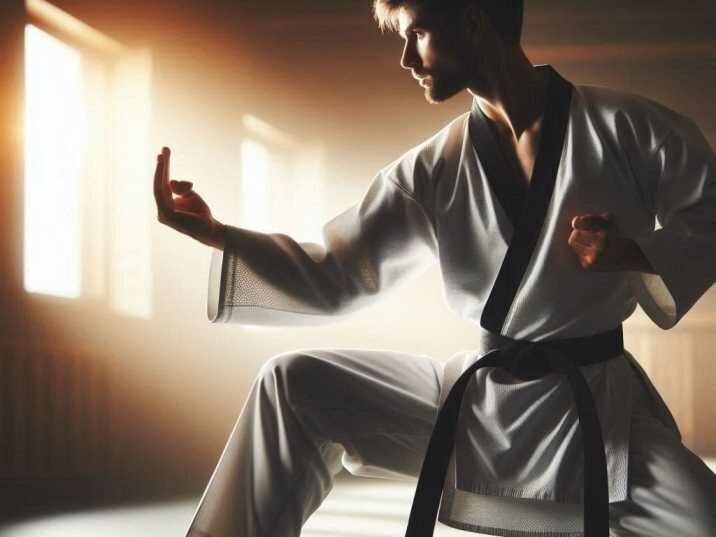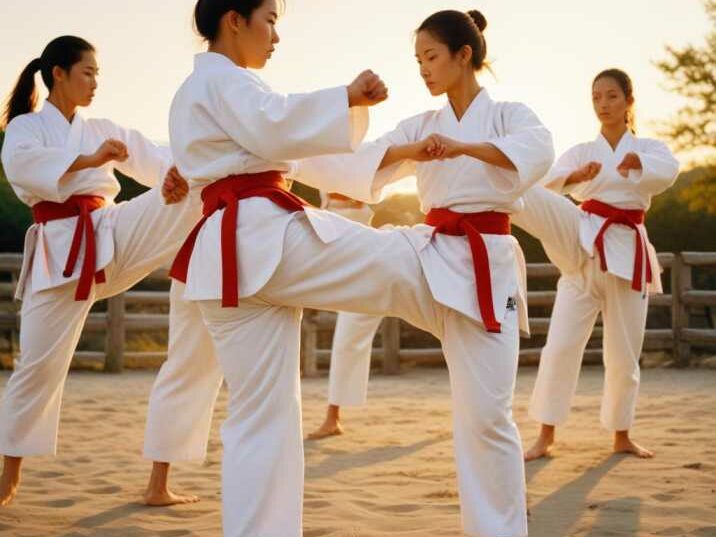Introduction
Table of Contents
What is Tang Soo Do? Have you heard of Tang Soo Do? This martial art form has been around for centuries but remains a mystery to many. If you’re curious about martial arts, seeking a new way to stay fit, or simply love learning about different cultures, this blog post is for you! Today, we’ll explore the fascinating world of Tang Soo Do, its origins, techniques, benefits, and much more. By the end of this post, you’ll understand why Tang Soo Do is more than just a martial art—it’s a way of life.

What is Tang Soo Do?
Origins
Tang Soo Do traces its roots back to ancient Korea, blending influences from Chinese and indigenous Korean martial arts. The name “Tang Soo Do” itself means “Way of the Tang Hand,” referring to the Tang Dynasty of China, which greatly influenced Korean culture.
The Philosophy Behind Tang Soo Do
At its core, it is not just about physical prowess but also mental discipline and ethical conduct. The practice encourages respect, humility, and perseverance, aiming to develop both the mind and body.
Key Elements
Tang Soo Do is a comprehensive martial art that integrates various techniques and practices to develop well-rounded martial artists. The key elements of Tang Soo Do include:
- Striking Techniques:
- Punches and Strikes: Practitioners learn a variety of punches and hand strikes aimed at different targets on an opponent’s body. Techniques include straight punches, back fists, hammer fists, and ridge hands.
- Elbow Strikes: These are close-range strikes using the elbow as a weapon, effective in infighting scenarios.
- Kicking Techniques:
- Basic Kicks: These include front kicks, side kicks, and roundhouse kicks, which form the foundation of Tang Soo Do kicking techniques.
- Advanced Kicks: As students progress, they learn spinning kicks, jumping kicks, and combination kicks, which require greater skill and flexibility.
- Blocking Techniques:
- Basic Blocks: Practitioners start with fundamental blocks like low blocks, middle blocks, and high blocks to defend against various attacks.
- Advanced Blocks: More complex blocking techniques are introduced as students advance, including circular blocks and double blocks for more effective defense.
- Forms (Hyung):
- Hyung: These are pre-arranged sequences of movements that simulate combat against multiple opponents. Each form is a combination of offensive and defensive techniques and is essential for developing coordination, balance, and precision.
- Sparring (Dae Ryun):
- One-Step Sparring: A controlled form of sparring where practitioners perform pre-arranged sequences of attacks and defenses.
- Free Sparring: A more dynamic and free-form sparring practice where students apply techniques in a controlled, yet spontaneous, manner against an opponent.
- Self-Defense (Ho Sin Sul):
- Practical Techniques: Tang Soo Do includes practical self-defense techniques against common attacks such as grabs, holds, and strikes.
- Situational Training: Students are trained to handle various real-life situations, enhancing their ability to protect themselves effectively.
- Traditional Values and Etiquette:
- Respect: Practitioners show respect to their instructors, fellow students, and the art itself through bowing and adherence to dojo rules.
- Humility: Students are encouraged to remain humble, regardless of their skill level, fostering a culture of continuous learning and improvement.
- Perseverance: Tang Soo Do emphasizes the importance of perseverance in training and in life, teaching students to overcome challenges and setbacks.
The Benefits of Practicing Tang Soo Do
Practicing Tang Soo Do offers a wide range of benefits that extend beyond physical fitness, contributing to mental well-being and practical self-defense skills. Here are the detailed benefits:
Physical Fitness
Full-Body Workout:
- Strength: Tang Soo Do training involves rigorous physical activity, which builds muscle strength and endurance. Techniques like kicks, punches, and stances require and develop muscle power.
- Flexibility: Regular stretching and the execution of various kicking techniques enhance flexibility, which is crucial for effective martial arts practice and overall physical health.
- Endurance: The combination of cardiovascular workouts, repetitive drills, and sparring sessions improve cardiovascular health, increasing stamina and endurance.
Cardiovascular Health:
- It includes aerobic exercises such as sparring and fast-paced forms practice, which boost heart health and improve blood circulation.
Weight Management:
- The intense physical activity involved in Tang Soo Do can aid in burning calories, helping practitioners maintain a healthy weight or achieve weight loss goals.
Mental Discipline
Focus and Concentration:
- Practicing Tang Soo Do requires concentration on techniques, forms, and sparring strategies. This focus can enhance cognitive function and mental clarity.
Stress Relief:
- Physical activity, combined with the mental discipline of martial arts, can reduce stress levels. The practice serves as a constructive outlet for releasing tension and anxiety.
Self-Confidence:
- As students progress and master new techniques, their confidence grows. Achieving higher belt ranks and successfully defending themselves in sparring sessions boosts self-esteem.
Goal Setting and Achievement:
- Tang Soo Do instills the habit of setting and achieving goals. Students work towards progressing through belt ranks, mastering techniques, and improving their physical fitness, which translates into goal-setting skills in other areas of life.
Self-Defense Skills
Practical Techniques:
- Tang Soo Do teaches effective self-defense techniques that can be applied in real-life situations. Practitioners learn how to defend themselves against various types of attacks, such as punches, grabs, and weapons.
Situational Awareness:
- Training in Tang Soo Do includes developing awareness of one’s surroundings, which is crucial for personal safety. Practitioners learn to identify and avoid potential threats.
Confidence and Peace of Mind:
- Knowing how to defend oneself provides a sense of security and peace of mind. This confidence can deter potential aggressors and help practitioners remain calm and composed in threatening situations.
How to Get Started with Tang Soo Do
Finding a Dojang
Research:
- Look for a reputable Dojang (training hall) in your area. Seek recommendations from friends, family, or online reviews.
Instructors:
- Ensure the Dojang has experienced and certified instructors who can provide proper guidance and training. Look for instructors who prioritize safety, respect, and the traditional values of Tang Soo Do.
Trial Classes:
- Many Dojangs offer trial classes for new students. Attend a few to get a feel for the training environment, teaching style, and overall atmosphere.
What to Expect in Your First Class
Basic Techniques:
- Your first Tang Soo Do class will likely focus on basic techniques such as punches, kicks, and blocks. Instructors will teach you the fundamental stances and how to perform basic movements correctly.
Forms (Hyung):
- You will be introduced to the concept of forms and might begin learning your first Hyung, which is a series of pre-arranged movements.
Etiquette and Protocol:
- Instructors will explain the traditional values and etiquette of Tang Soo Do, including bowing, respecting your peers, and following Dojang rules.
Warm-Up and Stretching:
- Classes typically start with a warm-up and stretching session to prepare your body for physical activity and prevent injuries.
Essential Gear
Dobok (Uniform):
- You will need a Dobok, the traditional Tang Soo Do uniform, which consists of a jacket, pants, and a belt. The Dobok is designed to allow freedom of movement and withstand rigorous training.
Belt (Ti):
- The belt indicates your rank and progression in Tang Soo Do. Beginners start with a white belt, and as they advance, they earn belts of different colors.
Protective Gear for Sparring:
- As you progress and begin sparring, you will need protective gear such as headgear, mouthguard, chest protector, forearm guards, shin guards, and gloves to ensure safety during training.
Additional Training Equipment:
- Other equipment that can enhance your training includes target pads, kicking shields, focus mitts, jump ropes, and weights.
The Belt System
Understanding the Ranks
Tang Soo Do uses a colored belt system to signify a student’s progress. Beginners start with a white belt and advance through various colors, each representing a higher level of proficiency.
The Path to Black Belt
Achieving a black belt in Tang Soo Do is a significant accomplishment, often taking several years of dedicated practice. It symbolizes a high level of skill and a deep understanding of the art.
Beyond the Black Belt
In Tang Soo Do, earning a black belt is not the end but rather the beginning of a new phase of learning. Higher ranks, known as Dan, represent advanced levels of mastery and contribution to the Tang Soo Do community.
The Role of Forms in Tang Soo Do
What are Hyung?
Hyung are pre-arranged sequences of movements that simulate combat scenarios against multiple opponents. These forms are an integral part of Tang Soo Do, serving multiple purposes in the development of a martial artist. Each movement within a Hyung is deliberate and precise, designed to teach practitioners various aspects of combat, including striking, blocking, and footwork. Through consistent practice, students develop essential skills such as precision, balance, coordination, and timing. Hyung are not merely physical exercises; they embody the philosophical and strategic principles of Tang Soo Do, enabling practitioners to internalize the art’s techniques and values.
Popular Forms
Several Hyung are widely practiced, each with unique characteristics and applications:
- Pyung Ahn (Peace and Confidence): This series of five forms is designed to instill a sense of peace and confidence in practitioners. The Pyung Ahn forms emphasize stable stances, precise movements, and a balance between offense and defense. They are often among the first forms learned by students and serve as a foundation for more advanced techniques.
- Bassai (Penetrating the Fortress): Bassai is a dynamic form that symbolizes breaking through obstacles. It features powerful, swift movements and requires significant strength and agility. The form teaches practitioners how to generate power and maintain balance while executing rapid techniques.
- Naihanji (Internal Advanced Form): Naihanji focuses on close-quarter combat and internal power. It involves low stances and strong, grounded movements, emphasizing stability and internal energy. This form helps practitioners develop a deep understanding of body mechanics and power generation.
Each of these forms has a rich history and specific applications, contributing to the overall development of a Tang Soo Do practitioner.
The Importance of Practice
Consistent practice of Hyung is crucial for mastering Tang Soo Do. Repetition helps students internalize techniques, making them second nature. Through regular practice, practitioners enhance their muscle memory, allowing them to perform techniques with precision and fluidity. Moreover, practicing Hyung helps improve overall performance by developing attributes such as timing, rhythm, and spatial awareness. The meditative aspect of Hyung practice also fosters mental discipline, focus, and mindfulness, contributing to a well-rounded martial artist.
Sparring in Tang Soo Do
Types of Sparring
Sparring in Tang Soo Do is a critical component of training, allowing students to apply techniques learned in a controlled environment. There are several types of sparring, each offering unique training experiences:
- Free Sparring (Jee Pa Jang): This type of sparring is less structured, allowing practitioners to apply techniques spontaneously. Free sparring emphasizes adaptability, quick thinking, and real-time decision-making, helping students develop practical fighting skills.
- Controlled Sparring (Ho Sin Sul): Controlled sparring involves pre-arranged sequences of attacks and defenses. This type of sparring focuses on specific techniques and scenarios, allowing students to practice precision and control. Controlled sparring helps build confidence and familiarity with various self-defense situations.
Safety Measures
Safety is paramount in Tang Soo Do sparring. To minimize the risk of injury, students wear protective gear, including headgear, mouthguards, chest protectors, forearm guards, shin guards, and gloves. Instructors enforce strict rules to ensure a safe training environment, such as no striking to prohibited areas and maintaining control during sparring. Proper warm-up and stretching routines are also essential to prevent injuries and prepare the body for physical exertion.
Benefits of Sparring
Sparring offers numerous benefits, including:
- Skill Application: Sparring allows students to test their techniques in a dynamic, real-world setting, helping them understand how to effectively apply what they’ve learned.
- Improved Reaction Time: Engaging in sparring hones reflexes and reaction times, enabling practitioners to respond quickly to an opponent’s moves.
- Confidence Building: Successfully applying techniques in sparring builds confidence and prepares students for potential self-defense situations.
- Physical Conditioning: Sparring is an intense physical activity that enhances cardiovascular health, endurance, and overall fitness.
Tang Soo Do in Competitions
Local Tournaments
Many Tang Soo Do practitioners participate in local tournaments, where they can showcase their skills in forms, sparring, and breaking techniques. These competitions provide valuable experience, allowing students to test their abilities against peers and gain feedback from judges. Local tournaments also foster a sense of community and camaraderie among practitioners.
National and International Competitions
Advanced practitioners may compete in national and international competitions, representing their Dojang and gaining exposure to different styles and techniques. These high-level competitions challenge students to elevate their skills and provide opportunities for cultural exchange and learning. Competing on a larger stage also helps practitioners build resilience and determination.
The Spirit of Competition
While winning is rewarding, the true spirit of competition in Tang Soo Do lies in personal growth, respect for opponents, and the pursuit of excellence. Competitions are seen as opportunities to learn, improve, and demonstrate the values of Tang Soo Do, such as humility, integrity, and perseverance. By focusing on personal development rather than merely seeking victory, practitioners cultivate a lifelong commitment to the art.
The Global Reach
Tang Soo Do Around the World
Tang Soo Do has gained popularity worldwide, with schools and practitioners in numerous countries. This global presence fosters cultural exchange and mutual respect among martial artists, promoting the values of Tang Soo Do on an international scale. Practitioners from different backgrounds come together to share their knowledge and experiences, enriching the art and building a global community.
Prominent Organizations
Organizations like the World Tang Soo Do Association and the International Tang Soo Do Federation play a vital role in promoting and preserving the art of Tang Soo Do. These organizations provide standardization, certification, and support for practitioners and Dojangs around the world. They also organize events, competitions, and seminars, contributing to the continuous growth and development of Tang Soo Do.
Influential Figures
Masters like Hwang Kee and Jae Chul Shin have significantly contributed to the development and spread of Tang Soo Do. Hwang Kee, the founder of Tang Soo Do, established the foundation of the art and promoted its practice globally. Jae Chul Shin, a prominent student of Hwang Kee, furthered the art’s reach through his teaching and leadership. These influential figures have inspired countless students and played a crucial role in shaping Tang Soo Do’s history and evolution.
Integrating Tang Soo Do into Daily Life
Building a Routine
Consistency is key to mastering Tang Soo Do. Incorporate regular practice sessions into your daily routine to see continuous improvement. Setting aside dedicated time for training helps build discipline and ensures steady progress. Whether practicing forms, techniques, or sparring, regular training fosters skill development and physical fitness.
Applying Lessons Off the Mat
The principles of Tang Soo Do, such as discipline, respect, and perseverance, can be applied to various aspects of life. Practitioners learn to approach challenges with a positive mindset, show respect and empathy towards others, and remain committed to their goals. These values help individuals become better students, professionals, and community members, contributing to personal and societal well-being.
Staying Motivated
Maintaining motivation and enthusiasm for Tang Soo Do requires setting achievable goals and celebrating progress. Engaging with the Tang Soo Do community, whether through attending classes, participating in events, or connecting with fellow practitioners, helps sustain interest and commitment. Reflecting on personal achievements and staying inspired by the art’s rich history and philosophy can also keep motivation high.
Integrating Tang Soo Do into daily life offers numerous benefits, from physical fitness to personal growth. By building a consistent routine, applying the art’s principles off the mat, and staying motivated, practitioners can experience the profound impact of Tang Soo Do in all areas of their lives.

Conclusion
Tang Soo Do is more than just a martial art—it’s a path to personal growth, physical fitness, and mental discipline. Whether you’re looking to improve your self-defense skills, stay fit, or immerse yourself in a rich cultural tradition, Tang Soo Do has something to offer. Ready to begin your Tang Soo Do journey? Sign up for a class at your local Dojang today and experience the benefits firsthand.
FAQs
What age is appropriate to start Tang Soo Do?
Tang Soo Do is suitable for people of all ages, from young children to older adults. It’s never too late to start your martial arts journey.
How long does it take to earn a black belt in Tang Soo Do?
Earning a black belt typically takes several years of consistent practice and dedication. The exact time varies depending on individual progress and the school’s curriculum.
Is Tang Soo Do effective for self-defense?
Yes, Tang Soo Do teaches practical self-defense techniques that can be effective in real-life situations.
Can I practice Tang Soo Do at home?
While it’s beneficial to train under an experienced instructor, you can practice basic techniques and forms at home to supplement your training.
What should I look for in a Tang Soo Do instructor?
Look for an instructor who is experienced, certified, and has a teaching style that resonates with you. Personal recommendations and reviews can also be helpful.


